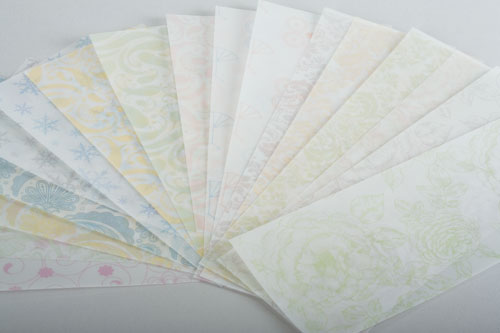
- #Printed translucent paper archive#
- #Printed translucent paper pro#
- #Printed translucent paper software#
- #Printed translucent paper series#
When you open a profile in ColorThink Pro, all of this information and more is readily available.
#Printed translucent paper pro#
Using ColorThink Pro and its Profile Inspector feature, we can not only generate 3-D graphs comparing multiple profiles, but also discover when the profile was created and with what device (hardware and software). The results speak for themselves as the video and plots below will demonstrate.

As readers know, these profiles are freely provided to customers for soft proofing purposes. The resulting 3-D graphs compare the profiles with sRGB, Adobe RGB, and inkjet pigment printer/paper profiles. It also allows you to analyze colors in your images to determine what printer/paper combination may work best when making prints.īy downloading ICC output profiles directly from commercial lab websites, I was able to generate ColorThink Pro gamut comparison plots.
#Printed translucent paper software#
This very useful software is a complete toolset for managing, repairing, evaluating and graphing ICC profiles. In fact, I was told these matters were best left up to “professionals” and that I would not understand.īecause I generated plots of those profiles in ColorThink Pro 3.0.3 software by CHROMix and analyzed them. Not surprisingly, not one company’s statements were accurate. I specifically asked whether they used generic profiles provided by OEM printer/paper manufacturers and was told no. In other words, they are remade often for best practices. When asked, others told me their profiles are custom made by color specialists and are kept up-to- date. This is untrue, and shame on them for not knowing this and misleading customers to make a sale.

Or that no inkjet pigment printer profile could exceed the gamut of Adobe RGB anyway. Some claimed their digital C-print profiles were as good or better than any commercial inkjet pigment printer profile available (not possible).
#Printed translucent paper archive#
Most photo labs stated that their profiles for various chromogenic printers on Fuji Crystal Archive papers cover most of the Adobe RGB color space – certainly more than sRGB – but scientific analysis proves this wrong as we will see. As we know when it comes to making prints, the largest possible gamut is preferable to capture all the colors in your images or artwork. I asked which RGB color working space best approximated the gamut of their profiles on a wide variety of printers (chromogenic or inkjet) and papers.

In doing research over the last six months, I’ve personally phoned technical support at more than 35 different commercial photo labs/print studios (some well-known, some custom), inquiring about ICC printer/paper profiles for soft proofing images. This holds true whether these print businesses produce C-prints or inkjet pigment prints. Just like print longevity claims, exaggerated assertions run wild when it comes to color gamut coverage professed by OEM printer/paper manufacturers, photo labs and custom print establishments alike. In order to make the best printer/paper choice for your particular image’s colors and subject matter, output color gamut needs to be taken into consideration. How the Colors Stack Up: Gamut Comparisons of ICC Printer Profiles Now, let’s take a look at differences in color output between these two popular printing technologies.
#Printed translucent paper series#
In part one of this series on digital printing, we defined what a chromogenic print is, set straight some of the misinformation and confusing terminology surrounding lab prints, and covered the pros and cons of inkjet prints and c-prints including differences in cost, quality, production speed, museum acceptance and more. “Art is not what you see, but what you make others see.” – Edgar Degas


 0 kommentar(er)
0 kommentar(er)
